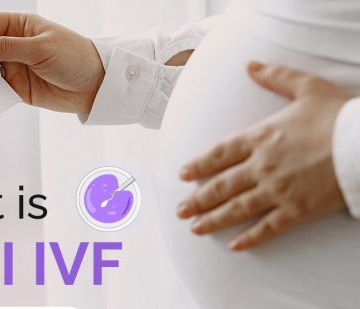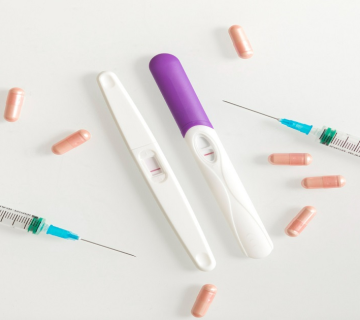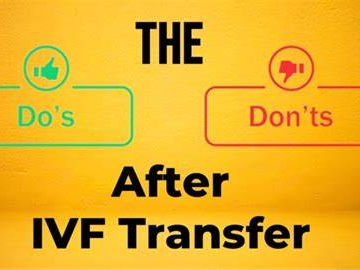
The Risks of IVF: Everything You Need to Know Before Starting Your Journey
IVF, or in vitro fertilization, is a life-changing option for millions of people dreaming of starting a family. It’s a process where eggs and sperm are combined in a lab to create embryos, which are then placed into the uterus to grow into a baby. For many, it’s a beacon of hope after years of infertility struggles. But like any medical procedure, IVF isn’t risk-free. From physical challenges to emotional rollercoasters and hefty price tags, there’s a lot to unpack.
This article dives deep into the risks of IVF, pulling from the latest research, expert insights, and practical tips to help you navigate this complex journey. We’ve scoured the top Google-ranked articles on this topic to see what they cover—and what they miss—so we can bring you a guide that’s more complete, more actionable, and uniquely valuable. Whether you’re just exploring IVF or already in the thick of it, we’re here to arm you with the knowledge you need to make informed decisions. Let’s get started.
What Is IVF and Why Does It Matter?
Before we jump into the risks, let’s break down what IVF is in simple terms. IVF is a type of assisted reproductive technology (ART) designed to help people conceive when natural methods aren’t working. Here’s how it goes:
-
- Ovarian Stimulation: You take medications to boost your ovaries into producing multiple eggs.
-
- Egg Retrieval: A doctor uses a small needle to collect those eggs from your ovaries.
-
- Fertilization: In a lab, the eggs meet sperm, and embryos start to form.
-
- Embryo Transfer: One or more embryos are placed into your uterus, hoping they’ll implant and grow.
It’s a remarkable process that’s brought joy to countless families—over 8 million babies have been born via IVF worldwide since it began in 1978. But with great potential comes real risks. Knowing what could go wrong, and how to handle it, is key to feeling confident as you move forward.
Medical Risks of IVF: What Your Body Might Face
IVF involves medications, procedures, and a bit of science magic—all of which can put your body through some challenges. Let’s explore the main medical risks and how to manage them.
Ovarian Hyperstimulation Syndrome (OHSS): When Your Ovaries Overreact
What It Is: OHSS happens when the fertility drugs used to stimulate your ovaries work a little too well. Your ovaries can swell up, leak fluid into your belly, and cause discomfort—or worse.
Why It Happens: Drugs like gonadotropins push your ovaries to produce lots of eggs. For most people, this is fine, but in some cases, it triggers an overreaction. Think of it like revving a car engine too hard—it might overheat.
How Common Is It? The American Society for Reproductive Medicine says OHSS hits about 1-5% of IVF cycles. Mild cases are more common (bloating, nausea), while severe ones (shortness of breath, blood clots) are rare but serious.
Symptoms to Watch For:
-
- Mild: Bloating, mild belly pain, feeling full
-
- Severe: Rapid weight gain (10+ pounds in a few days), trouble breathing, severe pain
Practical Tips:
-
- ✔️ Track Your Body: Keep a daily log of symptoms like swelling or pain. Share it with your doctor right away if something feels off.
-
- ✔️ Stay Hydrated: Sip water or electrolyte drinks to help your body cope.
-
- ❌ Don’t Ignore It: Severe symptoms need a doctor’s attention ASAP—don’t wait it out.
Expert Insight: “OHSS is a reminder that while fertility medications are powerful tools, they must be used with caution. Always communicate openly with your doctor about any side effects,” says Dr. Orion Nightingale, a reproductive endocrinologist.
Multiple Pregnancies: Twins, Triplets, and Trouble
What It Is: Transferring more than one embryo can lead to twins, triplets, or more—which sounds exciting but comes with risks.
Why It Happens: To boost success rates, some clinics transfer multiple embryos. If more than one sticks, you’ve got multiples. It’s like planting extra seeds hoping one grows, but sometimes they all do!
How Common Is It? The CDC says about 40% of IVF pregnancies in the U.S. involve multiples, compared to just 3% naturally.
Risks Involved:
-
- For Mom: Higher chances of preterm labor, high blood pressure, and gestational diabetes.
-
- For Babies: Increased risk of being born early, low birth weight, and developmental challenges.
Practical Tips:
-
- ✔️ Consider Single Embryo Transfer (SET): Talk to your doctor about transferring just one embryo. It’s safer and still effective, especially with healthy embryos.
-
- ✔️ Use Preimplantation Genetic Testing (PGT): This checks embryos for issues, helping you pick the best one for SET.
-
- ❌ Don’t Assume More Is Better: More embryos don’t always mean better odds—they just mean more risk.
Expert Insight: “While twins might seem like a bonus, the health risks are real. Single embryo transfer is often the safer choice,” advises Dr. Ophelia, a fertility specialist.
Ectopic Pregnancy: When the Embryo Goes Astray
What It Is: An ectopic pregnancy is when an embryo implants outside the uterus, usually in a fallopian tube. It can’t grow into a baby and can be dangerous if untreated.
Why It Happens: IVF bypasses the tubes, but embryos can still drift there. It’s like mailing a package to the wrong address—it doesn’t belong there.
How Common Is It? Studies peg the risk at 2-5% for IVF pregnancies, versus 1-2% naturally.
Symptoms:
-
- Sharp pain on one side of your belly
-
- Vaginal bleeding
-
- Dizziness or fainting (if it ruptures)
Practical Tips:
-
- ✔️ Get Early Scans: Ultrasounds soon after transfer can spot an ectopic early.
-
- ✔️ Know the Signs: Call your doctor if you feel sudden, severe pain—don’t brush it off.
-
- ❌ Don’t Delay: This is a medical emergency if it progresses.
Birth Defects: A Small but Real Concern
What It Is: Babies born through IVF might have a slightly higher chance of birth defects, like heart or muscle issues.
Why It Happens: It’s not totally clear. It could be the IVF process, the infertility itself, or older parental age. Picture it like baking a cake—sometimes the recipe (genetics) or the oven (IVF) tweaks the outcome.
How Common Is It? A Fertility and Sterility study found a 1.37 times higher risk compared to natural births, but the overall chance is still low (around 4-5% versus 3%).
Practical Tips:
-
- ✔️ Genetic Counseling: Chat with a specialist before IVF to assess your risks.
-
- ✔️ Prenatal Tests: Extra screenings during pregnancy can catch issues early.
-
- ❌ Don’t Panic: Most IVF babies are perfectly healthy—this is just a heads-up.
Emotional Risks: The Mental Marathon of IVF
IVF isn’t just a physical process—it’s an emotional journey that can test your resilience. Here’s what you might face and how to cope.
Stress and Anxiety: The Waiting Game
What It Is: IVF is full of highs and lows—hope, fear, waiting, and sometimes disappointment. That rollercoaster can spike stress and anxiety.
Why It Happens: Every step (shots, retrieval, transfer, the two-week wait) brings uncertainty. It’s like waiting for a big test result, times ten.
How Common Is It? A Journal of Psychosomatic Obstetrics & Gynecology study found women in IVF have higher anxiety and depression rates than average.
Practical Tips:
-
- ✔️ Join a Group: Online forums or local support groups let you vent and connect.
-
- ✔️ Try Therapy: A counselor can teach coping tricks tailored to you.
-
- ❌ Don’t Bottle It Up: Ignoring stress makes it worse—talk it out.
Expert Insight: “IVF is as much an emotional journey as it is a physical one. Don’t hesitate to seek help when you need it,” says Dr. Caspian Sterling, a psychologist specializing in fertility issues.
Relationship Strain: Pressure on Partnerships
What It Is: IVF can stretch your relationship with your partner, causing tension or distance.
Why It Happens: Stress, money worries, and different ways of coping can clash. One of you might want to push forward while the other needs a break—it’s like rowing a boat out of sync.
Practical Tips:
-
- ✔️ Talk Often: Set aside time to share feelings, even the tough ones.
-
- ✔️ See a Couples Counselor: A pro can help you navigate disagreements.
-
- ❌ Don’t Blame: This is a team effort—pointing fingers only hurts more.
Financial Risks: The Cost of Growing Your Family
IVF isn’t cheap, and the bills can pile up fast. Let’s break down the financial risks and how to plan for them.
High Costs: A Big Investment
What It Is: IVF cycles are pricey, and most people need more than one try.
How Much? In the U.S., one cycle runs $12,000-$17,000, plus $3,000-$5,000 for meds. Multiples cycles? That’s $30,000+ easy.
Why It’s Risky: Only 19 states mandate insurance coverage (per the National Conference of State Legislatures), and even then, it’s spotty. You might drain savings or take on debt.
Practical Tips:
-
- ✔️ Check Insurance: Call your provider to see what’s covered—every penny counts.
-
- ✔️ Save Up: Start a fertility fund early to soften the blow.
-
- ❌ Don’t Skimp on Research: Cheaper isn’t always better—look at success rates, not just price.
Hidden Costs: The Sneaky Extras
What It Is: Beyond the main bill, there are add-ons like testing, freezing embryos, or travel to a clinic.
Examples:
-
- Pre-IVF tests: $500-$1,000
-
- Embryo storage: $300-$500/year
-
- Meds for a failed cycle: $1,000+
Practical Tips:
-
- ✔️ Get a Full Quote: Ask your clinic for a line-by-line cost breakdown.
-
- ✔️ Budget Extra: Set aside 10-20% more than you expect for surprises.
-
- ❌ Don’t Assume It’s All Included: Clarify what “cycle cost” really means.
Ethical Risks: Tough Choices Ahead
IVF raises big questions that go beyond medicine or money. Here’s what to think about.
Embryo Disposition: What Happens to Extras?
What It Is: If you have embryos left after IVF, you decide their fate—donate them, discard them, or freeze them indefinitely.
Why It’s Hard: It’s a moral puzzle. Are they potential kids? Science tools? It’s like deciding the future of a seed you’ve planted but won’t grow.
Options:
-
- Donate to research
-
- Give to another couple
-
- Discard
-
- Keep frozen
Practical Tips:
-
- ✔️ Plan Ahead: Talk it over with your partner before IVF starts.
-
- ✔️ Ask a Lawyer: Some choices have legal strings attached—know them.
-
- ❌ Don’t Rush: Take time to feel sure about your decision.
Selective Reduction: A Heart-Wrenching Call
What It Is: If you’re pregnant with multiples, doctors might suggest reducing the number of fetuses for a healthier outcome.
Why It Happens: Too many babies at once can risk everyone’s health. It’s like thinning a overcrowded garden so the rest thrive.
Practical Tips:
-
- ✔️ Get the Facts: Ask your doctor why it’s recommended and what the risks are.
-
- ✔️ Lean on Support: Counselors or clergy can help you process it.
-
- ❌ Don’t Judge Yourself: This is about health, not failure.
Long-Term Risks: Looking Ahead for You and Your Child
IVF’s effects don’t end with birth. Let’s look at potential long-term impacts.
Epigenetic Changes: Subtle Shifts in Genes
What It Is: Epigenetics is how genes turn “on” or “off” without changing DNA. Some studies hint IVF might tweak this, affecting health later.
What It Means: Think of genes as a recipe book—IVF might adjust how the pages are read, possibly raising risks like diabetes or heart issues.
Evidence: A Journal of Developmental Origins of Health and Disease review linked IVF to slight cardiometabolic risks in kids.
Practical Tips:
-
- ✔️ Stay Updated: Research is evolving—check in with your doctor over time.
-
- ✔️ Healthy Habits: Good diet and exercise can offset some risks.
-
- ❌ Don’t Overworry: These are small possibilities, not guarantees.
Neurodevelopmental Outcomes: Brain and Behavior
What It Is: Some wonder if IVF kids face higher risks of autism or delays, but the data’s murky.
Evidence: A Swedish study found no big autism risk after adjusting for factors like parental age. Still, research continues.
Practical Tips:
-
- ✔️ Watch Milestones: Keep an eye on your child’s growth and talk to a pediatrician if you’re concerned.
-
- ✔️ Act Early: Early therapy can help with any delays, IVF or not.
-
- ❌ Don’t Assume the Worst: Most IVF kids thrive—don’t let fear take over.
How to Lower IVF Risks: Your Action Plan
Risks are real, but you’re not powerless. Here’s how to tilt the odds in your favor.
Pick a Great Clinic
Why It Matters: A skilled team can cut risks like OHSS or ectopic pregnancies with better care and tech.
How to Choose:
-
- Check success rates on the CDC’s ART database.
-
- Read patient reviews online.
-
- Ask about their OHSS prevention plan.
Practical Tips:
-
- ✔️ Visit First: Tour the clinic and meet the staff.
-
- ❌ Don’t Rush: A good fit beats a quick start.
Live Healthy
Why It Helps: Your body’s prep work can ease IVF and improve outcomes.
Steps to Take:
-
- Eat colorful fruits and veggies (antioxidants rock).
-
- Walk or do yoga—skip the hardcore gym stuff during treatment.
-
- Cut back on coffee and booze.
Practical Tips:
-
- ✔️ Start Now: Healthy habits take time to stick.
-
- ❌ Don’t Overdo It: Rest is key during IVF.
Embrace New Tech
What’s Out There: Tools like PGT or time-lapse embryo imaging can boost success and lower risks.
Benefits: PGT spots healthy embryos, cutting birth defect odds and supporting SET.
Practical Tips:
-
- ✔️ Ask About It: See if your clinic offers these extras.
-
- ❌ Don’t Assume You Need It: It’s not for everyone—talk it over.
Interactive Section: Test Your IVF Smarts
Ready to see what you’ve learned? Take this quick quiz:
-
- What’s a common IVF side effect from fertility drugs?
-
- A) Ectopic pregnancy
-
- B) OHSS
-
- C) Birth defects
-
- D) Stress
-
- What’s a common IVF side effect from fertility drugs?
-
- How can you avoid twins or triplets?
-
- A) Transfer more embryos
-
- B) Skip meds
-
- C) Use SET
-
- D) Freeze all embryos
-
- How can you avoid twins or triplets?
-
- What’s a hidden IVF cost?
-
- A) Doctor visits
-
- B) Embryo storage
-
- C) Gas to the clinic
-
- D) All of these
-
- What’s a hidden IVF cost?
Answers:
-
- B) OHSS
-
- C) Use SET
-
- D) All of these
How’d you do? Share your score below!
Wrapping Up: Your IVF Journey, Informed
IVF is a big step—a mix of hope, science, and a little bravery. Yes, there are risks, from swollen ovaries to emotional ups and downs to wallet woes. But armed with this info, you’re ready to face them head-on. Talk to your doctor, lean on your support crew, and take it one day at a time.
Got thoughts or stories to share? Drop a comment—we’d love to hear from you. Your experience might just light the way for someone else.
Note: This isn’t medical advice—always check with your healthcare pro for what’s best for you.




No comment